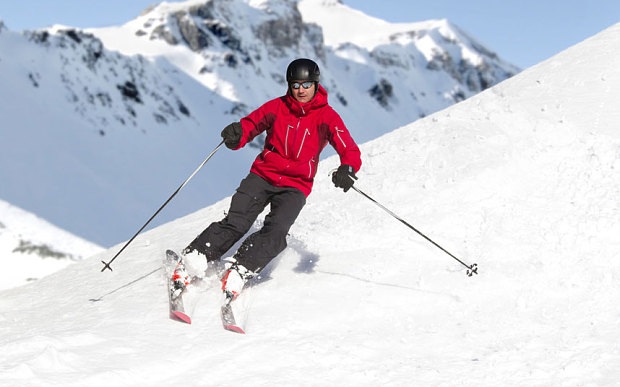
03 Aug Safety Planning
Preparing Physically for Your Vacation
Get in shape to ski– do not ski to get in shape. Skiing and riding are amazing, vigorous winter sports. Always make an honest assessment of your physical abilities.
What to Wear
The weather can change radically and rapidly, so plan to bring or buy goggles, sunglasses, sun protection, a hat and clothing that makes it possible for you to dress in layers. Multiple layers of clothing are best because layers can be added and removed in order to better regulate your body temperature.
Your base layer should be long underwear, preferably in a wool and polyester blend. The mid layer should be a turtleneck or long sleeve shirt. Outer layers can include a coat and pants and should be water resistant and comfortable.
High Altitude Tips
The elevation ranges between 7,000 feet above sea level at the base to 10,000 feet at the top of Jupiter Peak. If you live at lower elevations you may experience altitude sickness, usually within the first 48 hours of your arrival. You may ask for help from Mountain Patrol if you find symptoms persisting or worsening.
Utah Law
State of Utah Inherent Risk Law (See Utah Code Ann. Sec. 78-27-51 et. seq.) provides that as a “skier” you think the risk of and accept the responsibility for injuries resulting from the inherent risks of skiing/riding, which include, but are not limited to:
1. Changing weather conditions
2. Variations or steepness in terrain
3. Snow or ice conditions
4. Surface or subsurface conditions such as bare spots, forest growth, rocks, stumps, impact with lift towers and other structures and their components;
5. Collisions with other skiers, persons or users;
6. A “skier’s” failure to ski within his own ability. Skiers include, among others, alpine/downhill skiers, nordic/cross-country skiers, telemarkers, snowboarders and mono-skiers.
Skiers include, among others, alpine/downhill skiers, nordic/cross-country skiers, telemarkers, snowboarders and mono-skiers.
All persons on or using any Park City Mountain Resort facilities, including spectators assume the risks set forth above as well as all risks which are inherent in this mountain environment.
Notice: If you cannot assume these risks and accept the Park City Mountain Resort policies and regulations described herein and posted at Park City Mountain Resort, please do not use this mountain resort or its lifts.
On the Slopes
• Take a lesson. Trained instructors can teach you more quickly and safely than learning on your own or from a friend. It’s also a good way to improve or refresh your skills and become familiar with the mountain.
• Read the loading and lift information boards. If you’re uncertain how to load or unload a certain chairlift, ask the attendant for instructions or help.
• Arrange a meeting place and time in case someone becomes separated from your group; tell someone in your group if you decide to leave the Resort.
• Be “predictable” when skiing or riding; don’t suddenly stop or swerve.
• The sun’s intensity is far greater at higher elevation.
• If you drop anything from a lift into a closed area or onto a run too difficult for your ability, note the number of the nearest lift tower and report it to the top lift attendant. Mountain Patrol can try to retrieve it.
• Go with the flow; pass others cautiously.
• Observe the areas posted as “Slow” and decrease your speed, no matter what your ability level.
• Fast or reckless skiing and riding can result in injury to you or others and perhaps the loss of your lift ticket.
• Check message boards at the bottom and top of the lifts.
• Flips and somersaults off jumps are not recommended at Park City Mountain Resort.
• Snowmobiles, grooming and snowmaking equipment may be in operation on any run at any time; stay clear.
• It is your responsibility to know which trails are open. Do not enter closed trails by going through the trees.
• Share the slopes. Enjoy a lifetime of winter sports.
• Skiing is a dangerous sport and can result in injury.
• Know and follow Your Responsibility Code.
• Never duck ropes.
In Case of Injury
Contact Mountain Patrollers wearing red parkas with white crosses. They can be contacted by calling 435-647-5411 or through a lift attendant or other Team Members.
1. Do not remove the injured person’s skis or snowboard
2. Do not move the injured person unless you are trained to do so
3. Cross your own skis uphill from the incident
4. Send someone to the nearest lift or open building to report the location, type of injury and description of the injured skier
Your Last Run of the Day
End the day on a positive note. Stop skiing or riding with the first signs of fatigue. Use caution walking in the buildings and parking lots. Melting and freezing, as well as water accumulation, can cause surfaces to become slippery.



No Comments